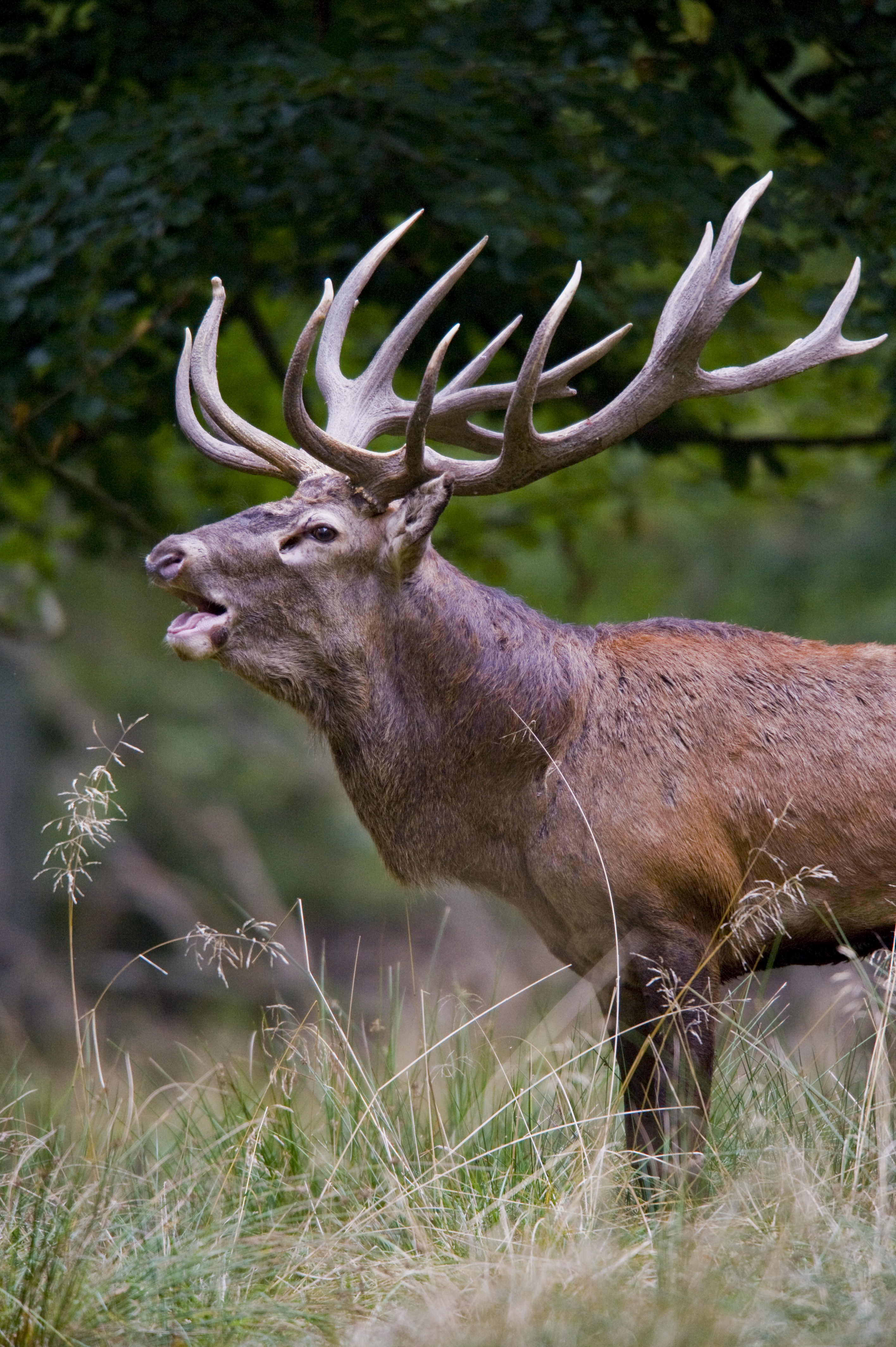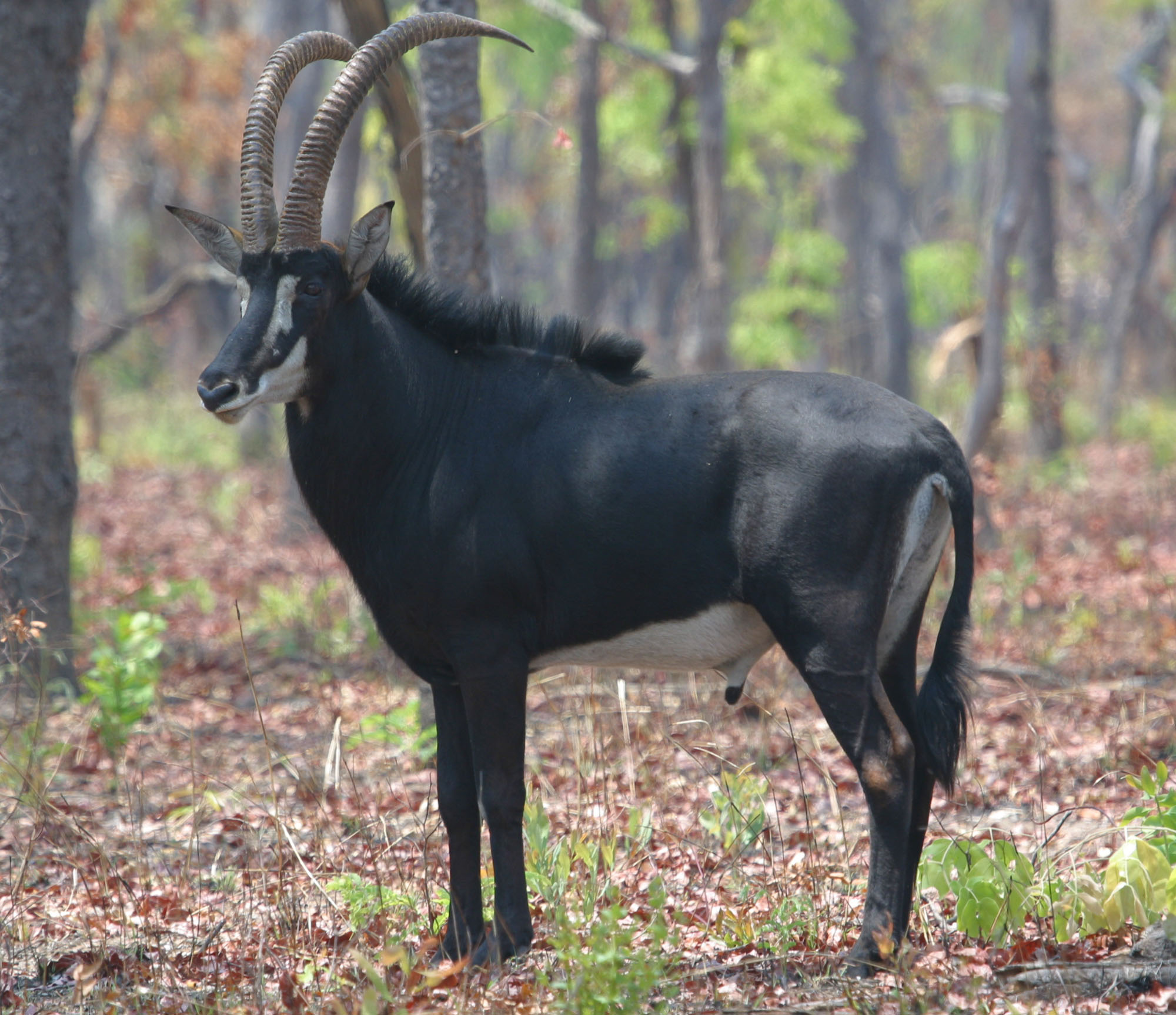|
Dik-dik
A dik-dik is the name for any of four species of small antelope in the genus ''Madoqua'', which live in the bushlands of eastern and southern Africa. Dik-diks stand about at the shoulder, are long, weigh and can live for up to 10 years. Dik-diks are named for the alarm calls of the females. In addition to the females' alarm call, both the male and female make a shrill, whistling sound. These calls may alert other animals to predators. Name The name ''dik-dik'' comes from an onomatopoeia of the repetitive ''dik'' sound female dik-diks whistle through their long, tubular snouts when they feel threatened. Physical characteristics Female dik-diks are somewhat larger than males. The males have horns, which are small (about ), slanted backwards and longitudinally grooved. The hair on the crown forms an upright tuft that sometimes partially conceals the short, ribbed horns of the male. The upper body is gray-brown, while the lower parts of the body, including the legs, belly ... [...More Info...] [...Related Items...] OR: [Wikipedia] [Google] [Baidu] |
Madoqua Saltiana
Salt's dik-dik (''Madoqua saltiana'') is a small antelope found in semidesert, bushland, and thickets in the Horn of Africa, but marginally also in northern Kenya and eastern Sudan. It is named after Henry Salt, who was the first European to acknowledge the species in Abyssinia in the early 19th century. Description Salt's dik-diks are long, high, and weigh . Kingdon, J. (1997). ''The Kingdon Guide to African Mammals.'' Academic Press. As in other dik-diks, the small, pointed horns are only present in the male. Their colour varies significantly depending on the subspecies. Taxonomy Together with the closely related silver dik-dik, this species forms the subgenus ''Madoqua'' in the genus ''Madoqua'' (other dik-diks are also in the genus ''Madoqua'', but the subgenus ''Rhynchotragus'').Ansell, W. F. H. (1972). Order Artiodactyla. Part 15. Pp. 1-84. ''in'': Meester, J., and H. W. Setzer, eds (1972). ''The mammals of Africa: An identification manual''Smithsonian Institution P ... [...More Info...] [...Related Items...] OR: [Wikipedia] [Google] [Baidu] |
Preorbital Gland
The preorbital gland is a paired exocrine gland found in many species of artiodactyls, which is homologous to the lacrimal gland found in humans. These glands are trenchlike slits of dark blue to black, nearly bare skin extending from the medial canthus of each eye. They are lined by a combination of sebaceous and sudoriferous glands, and they produce secretions which contain pheromones and other semiochemical compounds. Ungulates frequently deposit these secretions on twigs and grass as a means of communication with other animals. The preorbital gland serves different roles in different species. Pheromone-containing secretions from the preorbital gland may serve to establish an animal's dominance (especially in preparation for breeding), mark its territory, or simply to produce a pleasurable sensation to the animal. Because of its critical role in scent marking, the preorbital gland is usually considered as a type of scent gland. A further function of these glands may be ... [...More Info...] [...Related Items...] OR: [Wikipedia] [Google] [Baidu] |
Lion
The lion (''Panthera leo'') is a large Felidae, cat of the genus ''Panthera'', native to Sub-Saharan Africa and India. It has a muscular, broad-chested body (biology), body; a short, rounded head; round ears; and a dark, hairy tuft at the tip of its tail. It is sexually dimorphic; adult male lions are larger than females and have a prominent mane. It is a social species, forming groups called prides. A lion's pride consists of a few adult males, related females, and cubs. Groups of female lions usually hunt together, preying mostly on medium-sized and large ungulates. The lion is an apex predator, apex and keystone predator. The lion inhabits grasslands, savannahs, and shrublands. It is usually more diurnality, diurnal than other wild cats, but when persecuted, it adapts to being active nocturnality, at night and crepuscular, at twilight. During the Neolithic period, the lion ranged throughout Africa and Eurasia, from Southeast Europe to India, but it has been reduced to fr ... [...More Info...] [...Related Items...] OR: [Wikipedia] [Google] [Baidu] |
Etosha National Park
Etosha National Park is a national park in northwestern Namibia and one of the largest national parks in Africa. It was proclaimed a game reserve in March 1907 in Ordinance 88 by the Governor of German South West Africa, Friedrich von Lindequist. It was designated as ''Wildschutzgebiet'' in 1958, and was awarded the status of national park in 1967, by an act of parliament of the Republic of South Africa. It spans an area of and was named after the large Etosha pan which is almost entirely within the park. With an area of , the Etosha pan covers 23% of the total area of the national park. The area is home to hundreds of species of mammals, birds and reptiles, including several Threatened species, threatened and Endangered species, endangered species such as the black rhinoceros. Sixty-one black rhinoceros were killed during poaching in Namibia during 2022, 46 of which were killed in Etosha. The park is located in the Kunene Region, Kunene region and shares boundaries with the regi ... [...More Info...] [...Related Items...] OR: [Wikipedia] [Google] [Baidu] |
Antelope
The term antelope refers to numerous extant or recently extinct species of the ruminant artiodactyl family Bovidae that are indigenous to most of Africa, India, the Middle East, Central Asia, and a small area of Eastern Europe. Antelopes do not form a monophyletic group, as some antelopes are more closely related to other bovid groups, such as bovines, goats, and sheep, than to other antelopes. A stricter grouping, known as the true antelopes, includes only the genera '' Gazella'', '' Nanger'', '' Eudorcas'', and '' Antilope''. One North American mammal, the pronghorn or "pronghorn antelope", is colloquially referred to as the "American antelope", despite the fact that it belongs to a completely different family ( Antilocapridae) than the true Old-World antelopes; pronghorn are the sole extant member of an extinct prehistoric lineage that once included many unique species. Although antelope are sometimes referred to, and easily misidentified as, "deer" ( cervids), true ... [...More Info...] [...Related Items...] OR: [Wikipedia] [Google] [Baidu] |
Genus
Genus (; : genera ) is a taxonomic rank above species and below family (taxonomy), family as used in the biological classification of extant taxon, living and fossil organisms as well as Virus classification#ICTV classification, viruses. In binomial nomenclature, the genus name forms the first part of the binomial species name for each species within the genus. :E.g. ''Panthera leo'' (lion) and ''Panthera onca'' (jaguar) are two species within the genus ''Panthera''. ''Panthera'' is a genus within the family Felidae. The composition of a genus is determined by taxonomy (biology), taxonomists. The standards for genus classification are not strictly codified, so different authorities often produce different classifications for genera. There are some general practices used, however, including the idea that a newly defined genus should fulfill these three criteria to be descriptively useful: # monophyly – all descendants of an ancestral taxon are grouped together (i.e. Phylogeneti ... [...More Info...] [...Related Items...] OR: [Wikipedia] [Google] [Baidu] |
Shoot (botany)
In botany, a plant shoot consists of any plant stem together with its appendages like leaves, lateral buds, flowering stems, and flower buds. The new growth from seed germination that grows upward is a shoot where leaves will develop. In the spring, perennial plant shoots are the new growth that grows from the ground in herbaceous plants or the new stem or flower growth that grows on woody plants. In everyday speech, shoots are often synonymous with stems. Stems, which are an integral component of shoots, provide an axis for buds, fruits, and leaves. Young shoots are often eaten by animals because the natural fiber, fibers in the new growth have not yet completed secondary cell wall development, making the young shoots softer and easier to chew and digest. As shoots grow and age, the cells develop secondary cell walls that have a hard and tough structure. Some plants (e.g. bracken) produce toxins that make their shoots inedible or less palatable. File:Cucumber leaf.jpg, The sh ... [...More Info...] [...Related Items...] OR: [Wikipedia] [Google] [Baidu] |
Namibia
Namibia, officially the Republic of Namibia, is a country on the west coast of Southern Africa. Its borders include the Atlantic Ocean to the west, Angola and Zambia to the north, Botswana to the east and South Africa to the south; in the northeast, approximating a quadripoint, Zimbabwe lies less than 200 metres (660 feet) away along the Zambezi, Zambezi River near Kazungula, Zambia. Namibia's capital and largest city is Windhoek. Namibia is the driest country in sub-Saharan Africa, and has been inhabited since prehistoric times by the Khoekhoe, Khoi, San people, San, Damara people, Damara and Nama people. Around the 14th century, immigration, immigrating Bantu peoples arrived as part of the Bantu expansion. From 1600 the Ovambo people#History, Ovambo formed kingdoms, such as Ondonga and Oukwanyama. In 1884, the German Empire established rule over most of the territory, forming a colony known as German South West Africa. Between 1904 and 1908, German troops waged a punitive ... [...More Info...] [...Related Items...] OR: [Wikipedia] [Google] [Baidu] |
Caracal
The caracal (''Caracal caracal'') () is a medium-sized Felidae, wild cat native to Africa, the Middle East, Central Asia, and arid areas of Pakistan and northwestern India. It is characterised by a robust build, long legs, a short face, long tufted ears, relatively short tail, and long canine teeth. Its coat is uniformly reddish tan or sandy, while the ventral parts are lighter with small reddish markings. It reaches at the shoulder and weighs . It was first scientific description, scientifically described by German naturalist Johann Christian Daniel von Schreber in 1776. Three subspecies are recognised. Typically nocturnality, nocturnal, the caracal is highly secretive and difficult to observe. It is territory (animal), territorial, and lives mainly alone or in pairs. The caracal is a carnivore that typically preys upon birds, rodents, and other small mammals. It can leap higher than and catch birds in midair. It stalks its prey until it is within of it, after which it ru ... [...More Info...] [...Related Items...] OR: [Wikipedia] [Google] [Baidu] |





